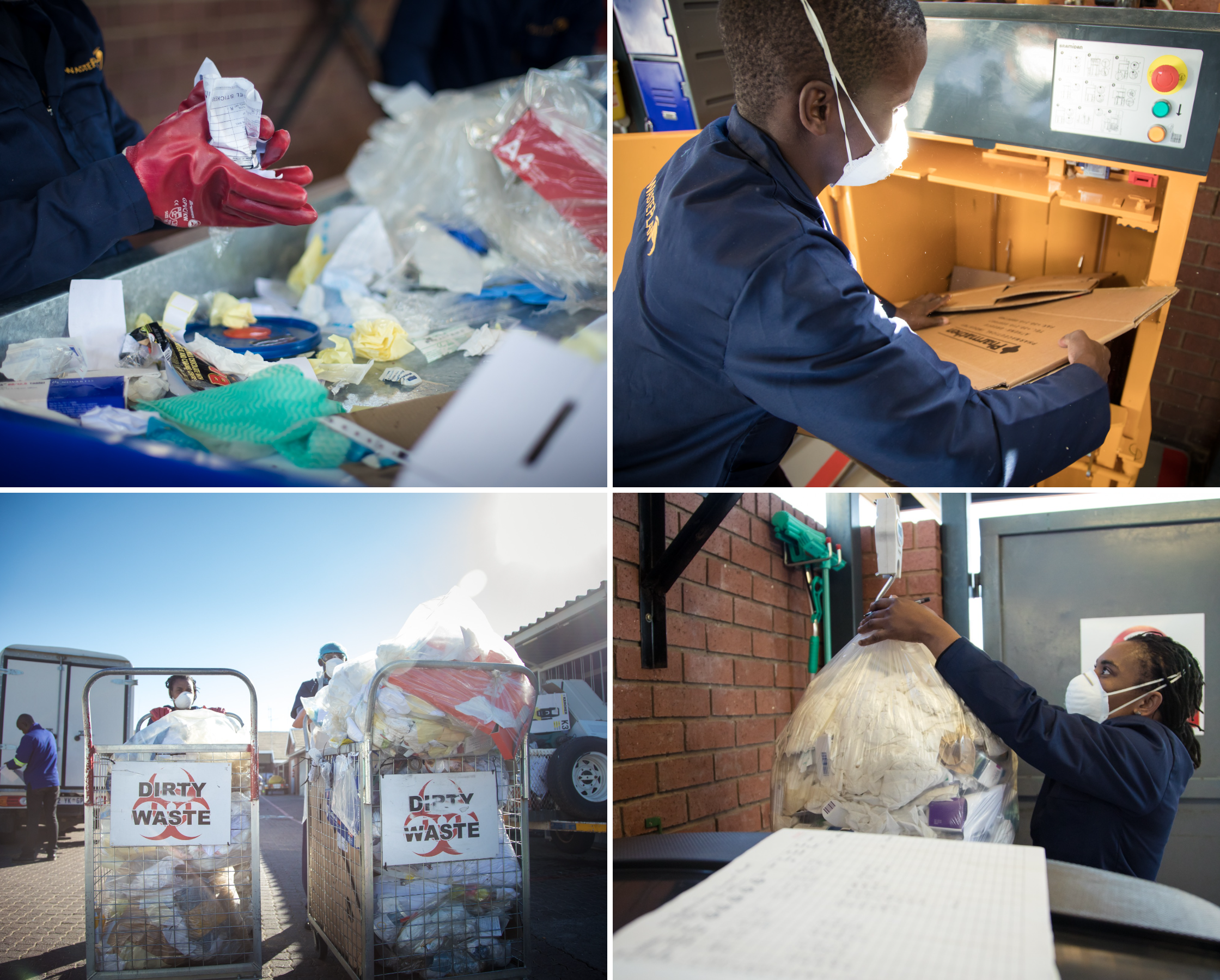By the end of our 2022 Financial Year, our passion for Zero Waste To Landfill (ZWTL) produced great results. Of the 535 800 tonnes of waste generated by our clients across South Africa, we recovered and recycled 89% (up from 81% in 2021).
And this is not greenwashing – we can trace every kilogram of waste we collected from cradle to cradle/grave, including what type of waste was generated at which site, how the waste was sorted and processed, all the way to their final destinations.
What is the difference between recovered waste and recycled waste?
The main difference between ‘recovering’ or ‘recycling’ waste is the end product of the process:
- Recovery refers to waste serving a useful purpose (like food waste being turned into compost)
- Recycling refers to a new product or material (like PET plastic water bottles being used to manufacture roof insulation or fibre-fill for pillows).

The big impact of diverting more than 476 862 tonnes of waste from landfill
Reducing the amount of raw materials and energy needed for manufacturing new products has a real, quantifiable impact on the South African environment. In 2022, our efforts translated into:
- Conserving 932 639 trees
- Saving more than 1 453 million litres of water
- Reducing the amount of CO2 released into our atmosphere by 58 627 tonnes
- Reducing the oil used in manufacturing processes by 760 682 barrels
What process do we use to recover and recycle our clients’ waste?
At WastePlan we sort, collect and process the waste of businesses such as hotels, hospitals, food factories, universities, shopping centers, office parks and large retail distribution centers.
- Waste is sorted on the client’s site by trained staff. Wet waste (or organic waste) is separated from the non-recyclables (like empty paint containers) and contaminated general waste. Wet waste is sent for composting, while general waste is taken to a registered landfill site for disposal. Only 11% of all the waste we processed in 2022 was sent to landfill.
- Some sites generate hazardous waste that require specialist disposal, such as fluorescent tubes, batteries and electronic waste (e-waste) from office parks. In these cases we work with certified recyclers like Reclite who recover potentially toxic elements like mercury and phosphor at their state-of-the-art facilities. As a result, in 2022 more than 3 000 tonnes of our clients’ hazardous waste was diverted from landfill.
- Recyclables are sorted per category. These include cardboard, paper, different types of plastic, tetrapak (food and beverage cartons made up of plastic, aluminium and cardboard), glass, steel and other metals (such as aluminium soda cans).
- Sorted recyclables are taken to our Material Recycling Facilities (MRF). Here all the recyclables collected from all our client sites are combined and baled. The bales are sold in bulk to other recyclers or manufacturers. Our clients receive a rebate for all recyclables sold from their site.

Want to recycle intelligently? Let us partner with you to ensure the waste generated by your business is reborn into new products and materials – without getting lost to landfill along the way.






